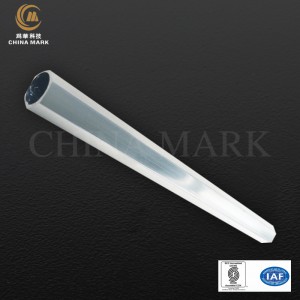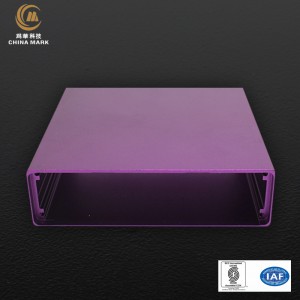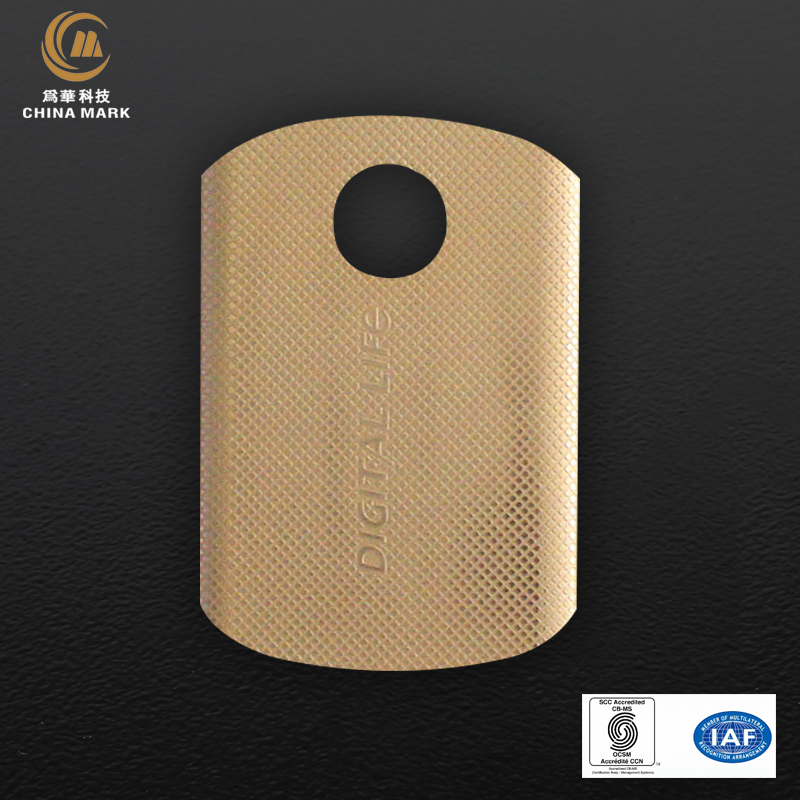What are the characteristics of several typical extruded aluminum alloys?Follow the China aluminum extrusion factory to learn more:
(1) 1035 alloy.
1035 alloy is industrial pure aluminum with less than 0.7% impurities, among which iron and silicon are the main impurities.Iron and silicon and some other metal impurities can slightly improve the strength, but significantly reduce the plasticity and conductivity of the alloy.
Industrial pure aluminum has high chemical stability in many media, which is higher than other metal with high potential.The high chemical stability of aluminum is due to the formation of a thin, dense oxide film on the surface of aluminum.
The less impurities in aluminum (especially iron and silicon), the higher its corrosion resistance.In fact, only magnesium and manganese do not reduce the corrosion resistance of aluminum.
Semi-finished products of 1035 alloy are supplied under annealing and hot extrusion.However, regardless of the state of supply, the final processing process of the extruded profile is a stretch straightening, which can be straightened on a roll straightening machine.When straightening, the strength property is improved slightly, but the plasticity decreases sharply.
In addition, the electrical conductivity of the alloy is slightly improved during cold deformation.Therefore, when the profile performance requirements are strict, it is necessary to consider the above performance changes when straightening.
When the temperature was increased, the strength and plasticity of 1035 alloy increased sharply.When the temperature is below zero, the strength and plastic properties of the alloy are significantly improved.
(2) 3 a21 alloy.
Alloy 3A21 is a deformed alloy in the AlMn binary system.It has high corrosion resistance and is virtually the same as that of 1035 alloy.The semi-finished products of 3A21 alloy are well qualified for gas welding, hydrogen welding, argon arc welding and contact welding.The corrosion resistance of the weld is the same as that of the base metal.The alloy has good deformation performance in cold and hot states, and the temperature range of thermal deformation is very wide (320 ~ 470C).The alloy cannot be strengthened by heat treatment and the alloy profiles are supplied in annealed or extruded state.
The effect of deformation temperature and deformation speed on deformation resistance of 3A21 alloy is much less than that of industrial pure aluminum.
(3) 6063 alloy.
As a typical representative of a1-mg-si alloy, alloy 6063 has excellent extrudability and weldability, and is the preferred material for building Windows and doors.It is characterized by high plasticity and corrosion resistance under the condition of temperature and speed of pressure machining.No stress corrosion tendency.During welding, the corrosion resistance does not actually decrease.
Alloy 6063 is strongly strengthened during heat treatment.The main strengthening phases in the alloy are MgSi and AlSiFe.If the tensile strength of 6063 alloy extruded profiles is 98 ~ 117.6mpa in annealing state, the tensile strength can be increased to 176.4 ~ 196MPa after quenching and natural aging.At this time, the relative elongation decreases little (from 23% ~ 25% to 15% ~ 20%).After artificial aging at 160 ~ 170℃, the alloy can obtain a greater strengthening effect. At this time, the tensile strength is increased to 269.5 ~ 235.2MPa.However, in the artificial aging, the plastic properties decreased more dramatically (=10% ~ 12%).
The interval time between quenching and artificial aging has a significant effect on the strengthening degree of 6063 alloy (in artificial aging). With the increase of the interval time from 15min to 4h, the tensile strength and yield strength decrease to 29.4 ~ 39.2MPa.The thermal insulation time during artificial aging has no significant effect on the mechanical properties of 6063 alloy semi-finished products.
(4) 6 how a02 alloy.
Ordinary 6A02 alloy (without limitation of copper content) belongs to a1-mg-si-cu series alloy.It has very high plastic properties at the temperature-velocity conditions of pressure machining and at room temperature.
In the production of 6A02 alloy extruded semi-finished products, although its manganese content is relatively small, but after the heat treatment can maintain no recrystallized structure, therefore, can significantly improve the strength performance.Like the 6063 alloy, the 6A02 alloy is rapidly strengthened during the heat treatment, and its main strengthening phases are Mg2Si and W(AlxMg5Si4Cu).
The tensile strength can be increased by natural aging after quenching, which is twice as high as that under annealing, and about twice as high as that under artificial aging after quenching.However, in the artificial aging, the plastic property decreased significantly (relative elongation decreased by about 1/2, and relative compression decreased by more than 2/3).
The 6A02 alloy is different from the 6063 alloy. The 6063 alloy has high corrosion resistance in both natural aging state and artificial aging state, while the corrosion resistance of the 6A02 alloy decreases obviously and intercrystalline corrosion tendency appears.The higher the copper content in 6A02 alloy, the more the corrosion resistance decreases.
In the corrosion process, as the copper content in the alloy increases, the intensity of the strength loss also increases. For example, if the copper content is 0.26%, after 6 months of testing (splashing with 30% NaCl solution), the tensile strength of the alloy decreases by 25%, while its relative elongation decreases by 90%.Therefore, in order to improve the corrosion resistance, the copper content in the alloy is usually controlled less than 0.1%.
6A02 alloy can be spot welded, roll welded and argon arc welded.The strength of welded joint is 60% ~ 70% of that of matrix metal.After quenching and aging, the strength of welded joint can reach 90% ~ 95% of that of matrix metal.
(5) 5 a06 alloy.
Alloy 5A06 belongs to the al-mg-mn series.It is highly plastic at room temperature and at high temperatures, and highly resistant to corrosion in a variety of media, including seawater.The excellent corrosion resistance and weldability of the alloy make it widely used in shipbuilding industry.The weld of the alloy has high strength and plastic property.At room temperature, the strength of welded joint can reach 90% ~ 95% of that of matrix metal.
The above is the introduction of several typical extruded aluminum alloys and their characteristics.We are a custom aluminum extrusion companies, can provide: square aluminum extrusion, round aluminum extrusion and other customized processing services, welcome to consult
Post time: Apr-11-2020



